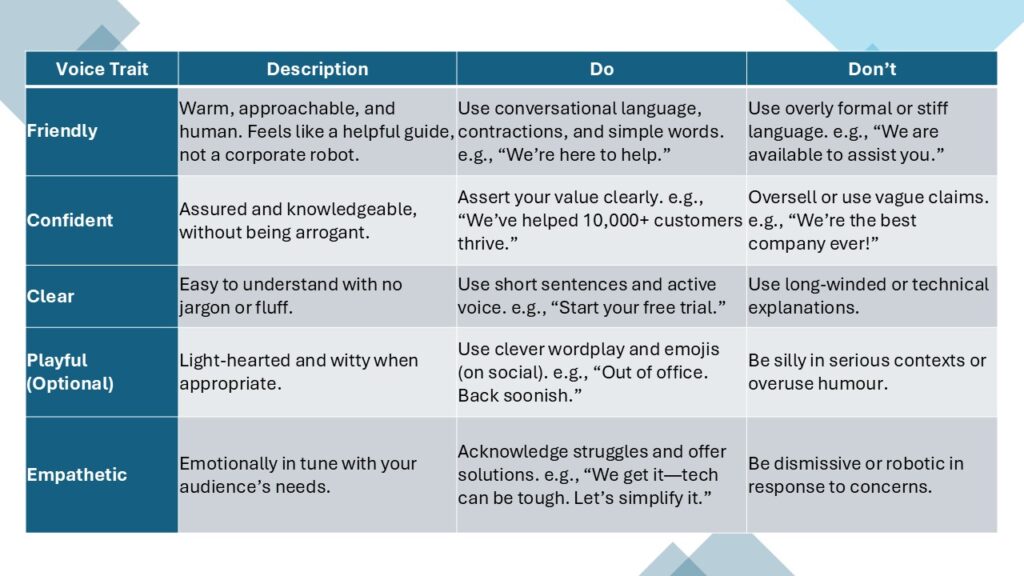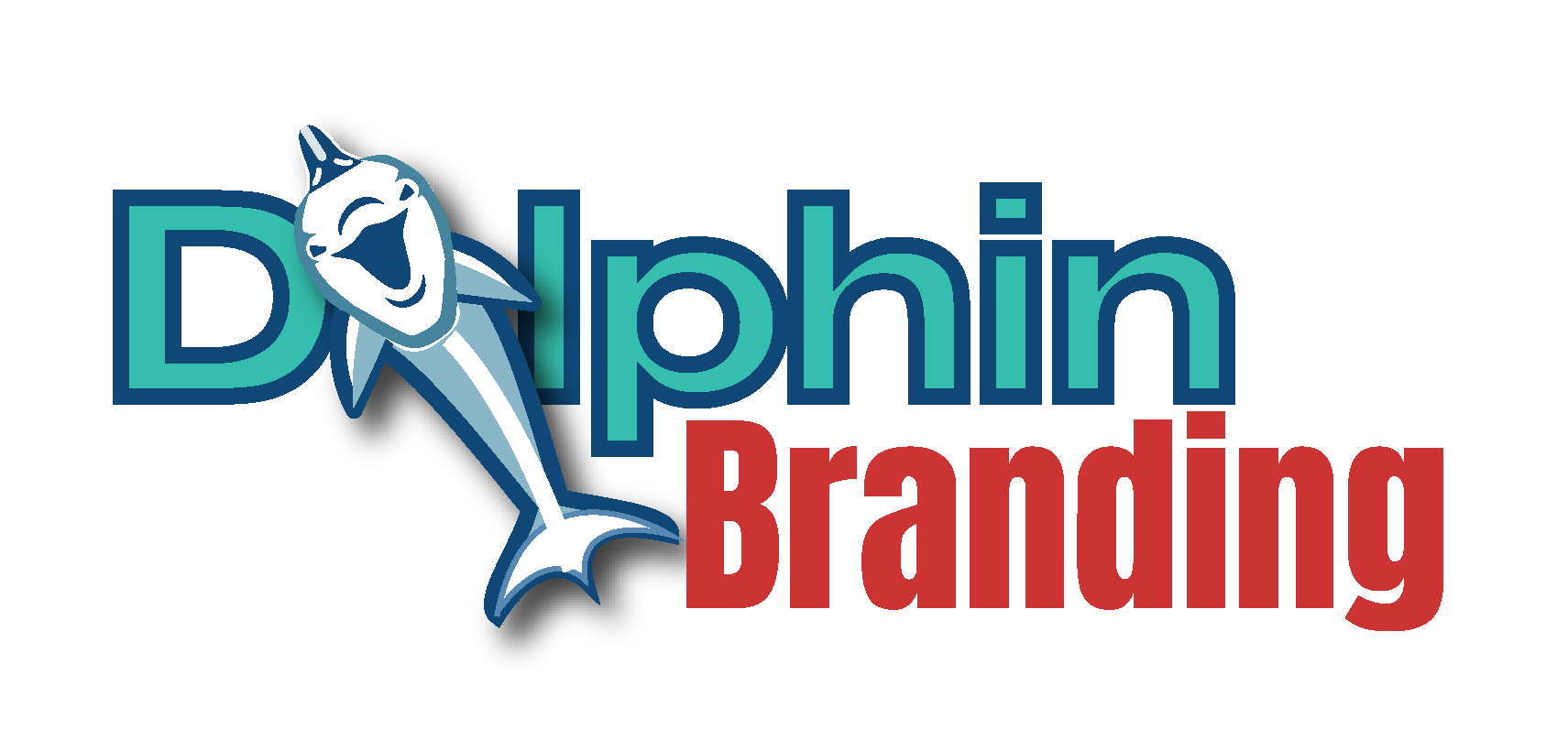Gone are the days when brands spoke to you. Now, they converse, tweet, email, comment, and blog. The line of communication has become two-way, thanks to the rapidly expanding hyper-connected digital landscape that hosts businesses today. Your brand voice becomes a mark of authenticity. Therefore, crafting a voice that resonates across channels is essential to earning trust, building recognition, and driving engagement.
But first, what is a brand voice? A brand voice is the distinct personality and tone your brand uses to communicate with its audience. It reflects who your brand is and how it wants to be perceived. Whether writing a social media post, sending a customer email, or launching a marketing campaign, your brand voice is not about sounding good. It’s about sounding right to your audience, every time, everywhere.
However, since there are so many platforms and formats, it’s easy for a brand’s voice to get lost in the noise. This is where designing a strong, intentional brand voice comes in handy.
Crafting a brand voice that resonates across channels involves strategy, consistency, and audience understanding. We know this can seem like a daunting task. So, we bring you Dolphin Branding’s step-by-step guide on how to make your brand voice sing.
Define Your Brand Core
Defining your brand’s core will act as an anchor for your brand’s voice. This foundation ensures your voice is authentic, relevant, and aligned with your audience’s expectations. Start by clarifying your:
- Mission – What is your brand’s purpose? Why do you exist beyond making money?
- Vision – What long-term impact do you want to create?
- Values – What principles guide your brand’s decisions and actions?
- Audience – Who are you talking to? What are their demographics, pain points, behaviours, and tone preferences?
Create a Brand Voice Chart
Once you know who you are, distil your personality into clear, repeatable traits using a Voice Chart. Your brand’s voice chart becomes the translation key for anyone writing on behalf of your brand. Keep your voice chart short and actionable. Use it as an everyday writing reference, not a manifesto. Break it down into:
- Voice Characteristics – e.g., Friendly, witty, empathetic, expert.
- Description – Define what each trait means for your brand. For instance: “Friendly” for a mental health app may look different than that for a gaming company.
- Dos and Don’ts – List out practical, contextual examples of how the trait plays out in the content. This keeps the tone aligned even when multiple people write for the brand.
Here’s an example of what a brand voice chart may look like:

Audit Existing Content for Brand Voice
This audit helps you build a unified voice from what’s already working and identify gaps to fix. Take stock of all your current communications across websites, social media, emails, packaging, chatbot replies, etc. Look for:
- Tone inconsistencies
- Strong moments – Where do you sound most ‘you’?
- Weak points – Where does the voice feel generic, stiff, or off-brand?
- Create a shared document summarizing:
- What to keep
- What to change
- Opportunities to elevate the tone
Build a Brand Voice Guide
Your voice guide is your team’s single source of truth. Like your voice chart, your voice guide must be clear, concise, and easy to use. It should include:
- Voice and tone overview – Recap your core characteristics and when to dial each one up or down.
- Platform-specific tone – Explain how your voice adjusts by channel (e.g., TikTok = casual, Website = confident and direct).
- Sample phrases – Common brand expressions, headlines, and intros to keep the tone consistent.
- Writing style rules – Grammar, punctuation, contractions, emojis, use of slang, and formatting (like sentence length).
Train Your Team
Even the best voice guides won’t stick unless your team is on board. Ensuring the following will allow your brand voice to live in action, not just remain on a document.
- Hold training sessions – Walk everyone through the guide with examples and interactive writing tasks.
- Create cheat sheets – Quick-reference tools for daily use.
- Review work – Give feedback often and highlight great examples of “on-brand” writing.
- Encourage collaboration – Writers, designers, and marketers should work together to align tone with visuals and messaging.
Tailor Voice to Channel Without Losing Consistency
Your tone can shift across platforms, but your core voice should remain unmistakable. Adapt tone based on the platform’s context. Maintain consistent brand language, values, and perspective, even as the tone flexes to fit the space.
- Website: Clear, professional, informative
- Social media: Conversational, engaging, timely
- Email: Personal, helpful, concise
Monitor and Evolve
Your voice should evolve as your business grows, your audience shifts or trends change. Monitoring your brand voice and staying intentional ensures your voice continues to resonate, not just echo. Here are some ways to keep your brand voice fresh:
- Track engagement – Which types of messaging get the most positive responses?
- Collect feedback – Internally and from your audience.
- Review quarterly – Refresh your guide and samples based on performance and team input.
A well-defined brand voice is a strategic tool that amplifies your message and builds lasting relationships. When used consistently across channels, it turns casual browsers into loyal customers and humanizes your brand in a crowded market. The key lies in staying authentic, adaptable, and true to your values.
Once you find your brand’s voice, you don’t communicate- you connect.
Crafting the right voice for your brand may seem like an intimidating task. But not when you have a specialist branding agency like Dolphin Branding in your corner.
Dolphin Branding has helped many businesses develop their brand voice by harnessing the power of words to tell your brand’s story. Drop us an email at: [email protected] today to work with us.



No responses yet